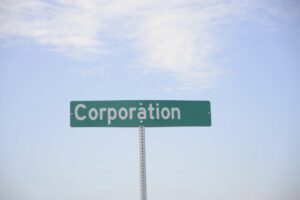
Consider the apparel company making scarves and dresses from the same fabric and in the same factory. To determine the value of inventory for the balance sheet, multiply the result of this formula by the number of remaining (unsold) items at the end of the reporting period. For illustrations of this formula in action, see the Absorption Costing Examples section, below. General or common overhead costs like rent, heating, electricity are incurred as a whole item by the company are called Fixed Manufacturing Overhead. Due to fixed costs, an increase in output volume typically leads to lower unit costs, and a decrease in output typically results in a higher cost per unit.

Replace Time-Wasting Spreadsheets With Financial Management
This is important for financial reporting and decision-making because it takes into account both variable and fixed production costs. If the management isn’t taking all fixed costs into consideration when valuing the true cost of producing inventory, the sales price might be too low and the company might actually be losing money on every product sold. Even if a company chooses to use variable costing for in-house accounting purposes, it still has to calculate absorption costing to file taxes and issue other official reports.
What is the absorption costing formula?
However, most companies may need to transition to absorption costing at some point, which can be important to factor into short-term and long-term decision making. The example exhibits the absorption costing technique, where it assigns the product costs to units produced and sold. This is very unlikely in the case of variable costing, where it only considers variable manufacturing overheads as product costs.
Absorption Costing vs. Variable Costing
Under this type of costing, the fixed manufacturing overhead expenses are accounted for as an indirect cost in the product cost. These expenses are spent throughout the production of the product and cannot be linked to a particular product. In the event of fluctuating production levels, absorption costing can lead to more reported income over the course of time. This is possible because the fixed overheads are spread out through units produced.

Absorption costing is an accounting technique that integrates all fixed and variable production expenses into the price of a good. Absorption costing appropriately acknowledges the significance of factoring in fixed production costs when determining product costs and formulating an appropriate pricing strategy. In a scenario where all fixed manufacturing overhead would be expensed for the relevant period under variable costing.
GAAP reporting and because it more accurately tracks profit versus variable costing, in compliance with GAAP’s matching principle. Also, this allocation of fixed overheads across the produced units can also lead to over or under-absorption of the overheads. In the long run, pricing established only in terms of variable costs (as encouraged by variable costing) may leave a contribution margin insufficient to cover fixed expenses. This method of costing is appreciated by the generally accepted accounting principles (GAAP) fo valuing inventory and financial reporting. Absorption costing means that ending inventory on the balance sheet is higher, while expenses on the income statement are lower. Ohana Accounting LLC is the partner small business owners count on for accurate accounting services, smart bookkeeping solutions, and valuable tax strategies.

What are the Advantages of Absorption Costing?
The larger the number of diverse products a company makes, the harder it is to determine each product’s share of common costs like labor, electricity and assembly-line machines. The absorption cost per unit is $7 ($5 labor and materials + $2 fixed overhead costs). As 8,000 widgets were sold, the total cost of goods sold is $56,000 ($7 total cost per unit × 8,000 widgets sold).
- If the absorbed amount is less than the actual overhead, there is said to be an under-absorption of overhead.
- The only distinction between ABS costing and variable costing is how fixed production overhead is handled.
- Companies that use variable costing may be able to allocate high monthly direct, fixed costs to operating expenses.
- For any manufacturer, knowing how much it costs to produce products is key to understanding the company’s profitability.
- Absorption costing means that ending inventory on the balance sheet is higher, while expenses on the income statement are lower.
Step in using absorption costing are:
Different unit prices are determined for various output levels because absorption costing depends on the output level. ABS costing will yield a more significant profit if the number of units produced exceeds the number of units sold. A variable cost is a recurring expense whose value changes in response to changes in output level. Shipping https://www.bookstime.com/ costs, production costs, and delivery fees are some examples of variable costs. It is also known as the recovery or application of overhead expenses to cost units. Therefore, it becomes necessary to charge overheads to the cost of products, jobs, and processes according to certain well-established norms and scientific reasoning.
- We will use the UNITS SOLD on the income statement (and not units produced) to determine sales, cost of goods sold and any other variable period costs.
- Companies can use absorption, variable, or throughput costing for internal reports.
- The product of this calculation will indicate the amount of overhead to be applied (or charged) to production for the period.
- This includes the cost of all materials that are directly used in the manufacturing process.
- Depending on the type of business structure, small businesses may also be required to use absorption costing for their tax reporting.
- Generally accepted accounting principles only require absorption costing for external reporting, not internal reporting.
- The salaries and benefits of supervisors and managers overseeing the production process are classified as fixed manufacturing overhead.
Taking into account the normal working of the factory, overhead was recovered in production at $1.25 per hour. Assigning costs involves dividing the usage measure into the total costs in the cost pools to arrive at the allocation rate per unit of activity, and assigning overhead costs to produced goods based on this usage rate. Variable manufacturing overhead includes the costs to operate absorption accounting a manufacturing facility, which vary with production volume. As you can see, the AC method assigns the cost of the workers’ wages and the utility expenses to the merchandise being produced. In many ways, this is a more accurate way to account for the true cost of producing the products. The disadvantages of absorption costing are that it can skew the picture of a company’s profitability.